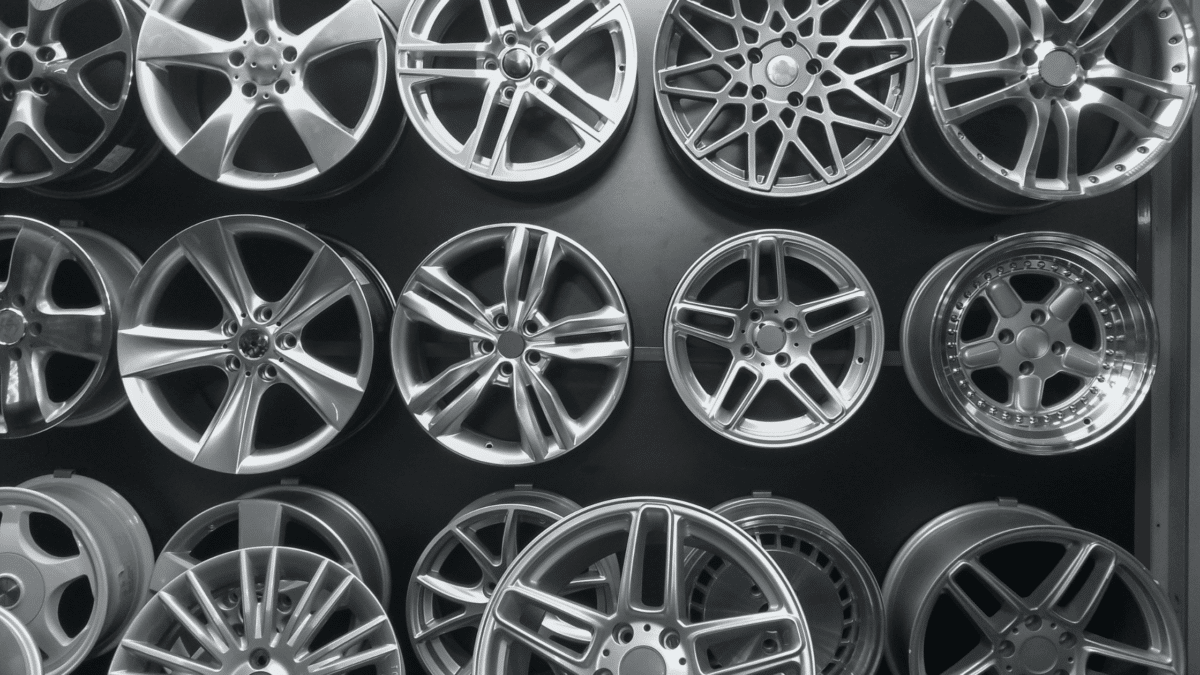How to Polish Aluminum
Commonly used in appliances, car wheels, and cookware, aluminum is incredibly versatile. At the same time, the metal is prone to discoloration and corrosion, both of which can damage its finish. Fortunately, with polishing, you can keep an aluminum finish looking great long into the future.
Today, we’re here to share everything you need to know about polishing aluminum, including recommended materials, safety tips, and step-by-step instructions.
Aluminum Polishing Benefits
There are many reasons to polish aluminum, such as:
1. Appearance
You can remove nicks, scratches, and other aluminum defects with polishing, resulting in a smooth surface. Plus, polishing can give the metal a clean, professional look.
2. Durability
Aluminum polishing can help improve the durability of the metal’s surface, reducing the risk of contamination and oxidation.
3. Corrosion Resistance
Polishing provides corrosion resistance, as it helps make the surface of aluminum more resistant to chemical reactions.
Many aluminum distributors understand the ins and outs of polishing aluminum. Of course, with the right supplies, you can polish aluminum on your own.
Aluminum Polishing Supplies
Here are the supplies you’ll need to polish aluminum:
- Aluminum pre-cleaning product
- Aluminum polish
- Protective eyewear and gloves
- Masking tape
- Mild dish detergent
- Stiff wire brush or fine steel wool
- Sandpaper in various grits
- Polishing compound
- Clean cloths or paper towels
- Orbital sander
These supplies will help you quickly and efficiently polish aluminum, protect yourself and others from chemical and equipment hazards, and limit the risk of mistakes.
How to Polish Aluminum to Mirror Finish
You can polish aluminum in three steps:
1. Clean the Metal
Remove dirt and grime from your aluminum. With minor buildup, use a mild detergent. Wash the surface, rinse it, and dry it with a clean cloth or paper towel.
If there’s still buildup on the surface, you may need to use a commercial aluminum pre-cleaning product. Once you apply this product, let it sit for a few minutes to loosen the buildup, then rinse it off. Repeat the process if buildup remains. You can also use a stiff wire brush or fine steel wool to remove debris.
You won’t always be able to remove severe discoloration, scratches, and other surface flaws with cleaning or polishing. If you want to remove these blemishes from the surface of your aluminum before you polish it, you may need to sand them down.
2. Sand the Metal
Before you start sanding, apply masking tape to the areas of your aluminum you don’t want to sand. Along with this, put on protective eyewear and gloves.
With sanding, begin with a low-grit sandpaper and work toward a finer grit. In many instances, a 320-grit abrasive works well. If you’re dealing with deep pits or gouges, you may want to go with a grit in the 180 to 250 range. Generally, you should not go below a 180-grit abrasive since it may damage your metal’s appearance.
In terms of the grit to use when you sand the surface, work your way up. For example, you may start with a 320-grit abrasive to remove blemishes. Next, you can move up to a 400-grit abrasive to further prepare your metal for polishing. Depending on your project, you may want to go as high as 1,500 grit.
3. Polish the Metal
If you want to polish an aluminum pan or any other metal surface that will have food on it, make your own polishing compound instead of using a product that’s made from chemicals. You can make this compound by combining equal parts of water and white vinegar or water and cream of tartar (potassium bitartrate).
Apply a small amount of aluminum polish to the surface of your metal. Then, with a clean paper towel or cloth, wipe the surface using small, circular motions.
After you remove the polishing residue, use another clean paper towel or cloth to buff the surface. When you do, use the same small, circular motions as before.
For a large polishing job, you can use an angle grinder with an airway or muslin buffing wheel in lieu of completing the work by hand. When you use this tool, buff each section of aluminum and add more polishing compound as needed. When you’re finished, wipe down the polishing residue from the surface and change your grinder’s buffing wheel.
When you use a grinder with a buffing wheel for aluminum polishing, start with a coarse abrasive. For instance, you can begin with a gray metal buffing compound bar, move on to a brown tripoli, and finish with a white rouge buffing compound to give your aluminum a mirror finish.
Aluminum Polishing Safety Tips
Use personal protective equipment (PPE) when you polish aluminum. Protective eyewear and gloves protect your eyes and hands when polishing chemicals and equipment. You can also protect exposed skin from the absorption of chemicals or metal with a barrier cream.
If you are working in an enclosed space, you may need respiratory protection. This helps prevent inhalation of chemical fumes or metal dust.
Additionally, tools used to grind and polish aluminum can be noisy, so you may want to wear earplugs or earmuffs to protect against noise hazards.
Lastly, as you search for tools you can use to polish aluminum, consider their safety features. Tools are available with variable-direction exhausts, which allow you to direct toxic fumes away from you while you work. You can pick up handheld tools with shock-resistant handles to protect against vibration and hand fatigue. There are even tools with ground fault circuit interrupters (GFCI) that help prevent electric shock.
Want Aluminum for Your Next Project?
In addition to providing tips and tricks for how to polish aluminum, Pennsylvania Steel Company serves as one of the leading aluminum suppliers in the northeast.
We offer a wide range of aluminum products for projects. We have multiple Pennsylvania, Southeast, Northeast, and Ohio aluminum distribution warehouses. Contact Pennsylvania Steel for aluminum near you.



